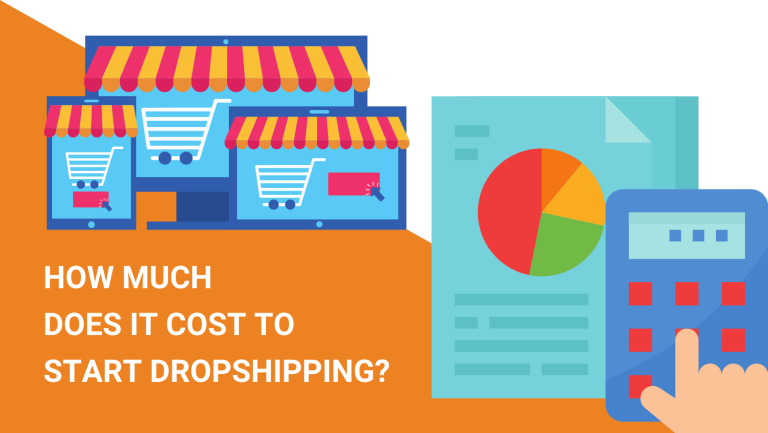Starting a dropshipping business is often seen as a more affordable and accessible way to dive into the world of eCommerce.
Unlike traditional retail stores, you don’t have to purchase inventory upfront or manage complex shipping logistics. This makes dropshipping an attractive option for entrepreneurs looking to start small with minimal risk.
Still, if you intend to venture into dropshipping, it is important that you have a realistic understanding of the start-up expenses that you may incur. This could help you plan better and put together enough resources to set up a successful dropshipping store.
So, how much does it really cost to start a dropshipping business? We’ve done the math and are here to break down the key expenses you’ll need to consider.
Let’s dive in and explore the real numbers behind setting up your dropshipping store.
How Much Do I Need to Start Dropshipping?
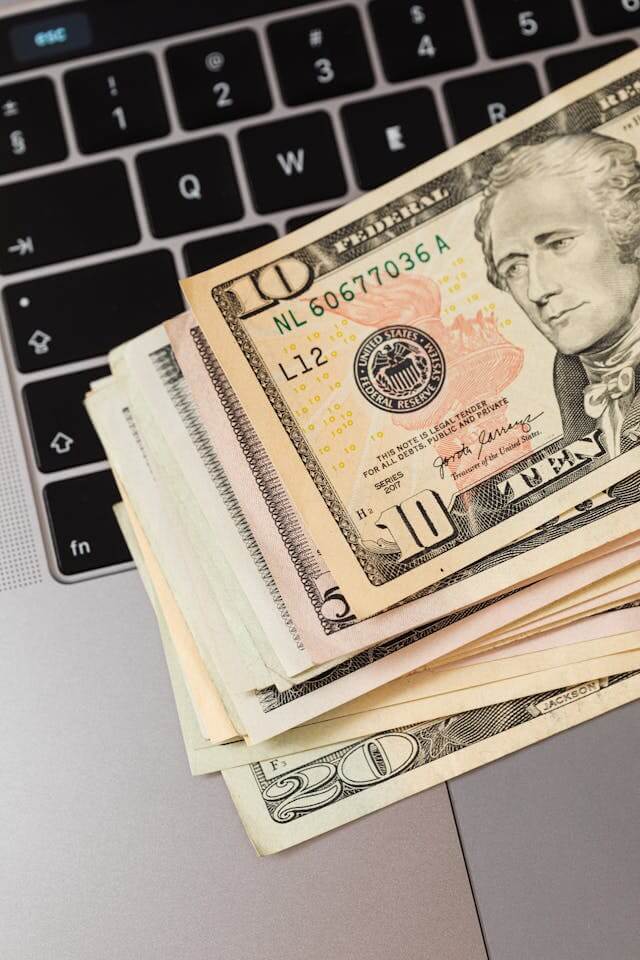
You’ve probably seen plenty of dropshipping “gurus” out there claiming you can start your business with little to no money, and while that might sound tempting, it’s a bit misleading.
Sure, you can technically start a dropshipping store with a very low initial investment like $100, but there are a lot of hidden costs that you’ll face once you begin scaling.
A significant portion of your budget will go toward marketing, as you’ll need to drive traffic to your store. Plus, you’ll have e-commerce platform fees, website development (if you’re not tech-savvy and opt for a professional site), and a variety of operational costs like taxes, legal fees, and shipping.
Let’s not forget that although some tools can be free or low-cost, if you want to truly grow your store, there are essential investments you’ll need to make. If you don’t factor in a solid marketing budget, you may have a beautifully built store, but without visitors, what’s the point?
So, while you could technically start with just the basics, to build a dropshipping business that actually stands out and makes sales, a more realistic starting budget starts from $500-1000 depending on the number of products you’re planning to launch.
In the next section, we’ll break down the specific expenses you should expect, giving you a clearer picture of what to plan for.
Key Expenses When Starting a Dropshipping Business
Starting a dropshipping business might not require a massive upfront investment, but there are still some essential costs you need to consider. Here’s a detailed breakdown:
| Key Expense | Estimated Cost Range |
| E-commerce Platform Fees | Depending on the platform, it can be anywhere from $19 to $299 per month, depending on the plan, hosting fee and domain name registration. |
| Website Development Costs | $0 (DIY) to $1000 (outsourcing) |
| Product Sourcing Expenses | Varies depending on the supplier and product (e.g., $1–$50 per product.) |
| Marketing Budget | $100 to no upper cap. It all depends on your budget and strategy. |
| Shipping Costs | Typically included in product cost or $5–$20+ per order. |
| Tax and Legal Compliance | $100 to $500 depending on location and business type. |
| White Labeling and Private Labeling | Varies between supplier to supplier and MOQ. |
E-commerce Platform Fees
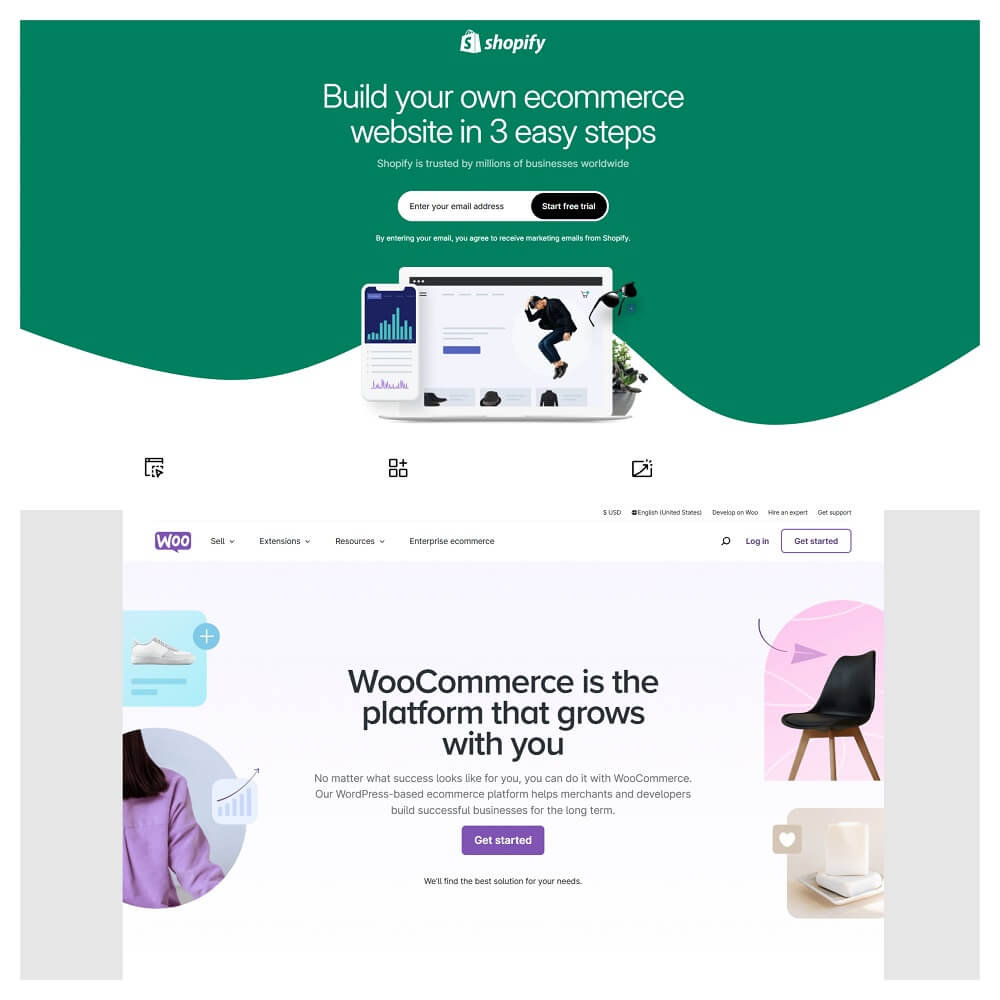
One of the first decisions you’ll make when starting a dropshipping business is choosing an e-commerce platform to host your store.
Popular platforms like Shopify, WooCommerce, and BigCommerce provide the tools and features needed to create a professional online store, but they come with associated costs:
- Shopify: Plans start at $19 per month, with additional fees for premium themes, apps, and transaction costs.
- WooCommerce: It’s technically free but requires hosting, which can cost $10–$30 per month, along with possible plugin and theme expenses.
- BigCommerce: Pricing starts at $29 per month for their Standard Plan, but higher-tier plans may be necessary as your business grows.
Expert Tip
Choose an e-commerce platform based on your budget and long-term goals. If you’re just starting out, consider platforms like Shopify for ease of use or WooCommerce for flexibility and lower upfront costs. Always factor in the potential for growth to avoid switching platforms later.
Website Development Costs

Creating an appealing and user-friendly website is critical for any dropshipping business. While e-commerce platforms like Shopify and WooCommerce simplify the process with ready-made templates, you might still incur costs to make your site stand out and function smoothly.
- Basic Setup: Platforms like Shopify offer free themes, but premium ones range from $50 to $350. WooCommerce users may need to purchase a WordPress theme costing $30–$100 or more.
- Custom Development: Hiring a freelance web developer for custom design or advanced features can cost anywhere from $500 to $1,000 depending on the scope of work. Even minor tweaks may require developer assistance, particularly with open-source platforms like WooCommerce.
- Essential Plugins and Tools: SEO plugins, payment gateway integrations, and analytics tools can add $10–$50 monthly to your expenses.
Expert Tip
Start small with basic templates. Learn from online tutorials how to set up a basic website and gradually upgrade as your budget and business grow. It’s not worth paying a professional especially if this is your first dropshipping store. Learn as much as you can by spending as little as possible.
Product Sourcing Expenses

While dropshipping spares you from the cost of maintaining inventory, there are still expenses tied to sourcing products, which include:
- Product Samples: Testing product quality is essential before listing items in your store. Sample costs vary depending on the supplier and product but can range from $10 to $100 per sample, excluding shipping fees.
- Supplier Fees: Some suppliers charge a one-time setup fee, monthly access fee, or per-order processing fee. These fees could range from $0.50 to $5 per order. Directory memberships like SaleHoo or Worldwide Brands may cost $50–$300 annually for access to vetted suppliers.
- Custom Branding Costs: If you opt for private labeling or custom packaging, expect additional fees from suppliers. This can range from $200 to $2,000 depending on your requirements and order volume.
Expert Tip
If negotiation isn’t your strong suit or you want to streamline the process, consider hiring a sourcing agent. It might sound like an added expense, but an experienced sourcing agent can be an invaluable addition to your team. They can negotiate with suppliers on your behalf and help you find the perfect mix between pricing and product quality for a higher profit margin.
Marketing Budget
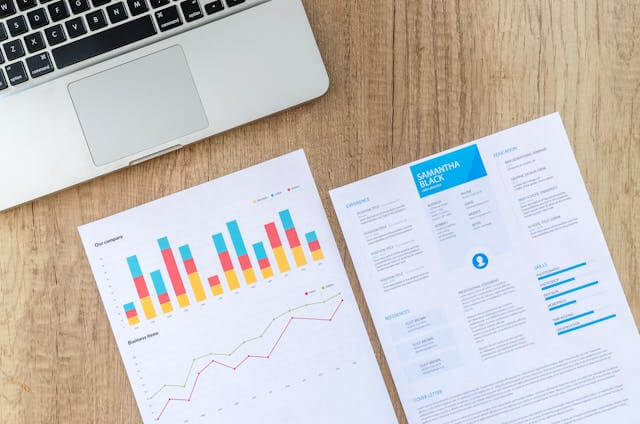
Advertising is crucial because it enables you to introduce your dropshipping store to your potential customers. Without it, it is unlikely that you would be able to make any substantial sales. Word of mouth referrals can only get you so far.
Google Ads, Facebook Ads, and other social media platforms are all great advertising avenues. Nevertheless, given that this would be introductory advertising, Google Ads may be the safer bet because:
- It Reaches an Incredibly Vast Audience: Google Ads appear on multiple platforms such as search engine results, Youtube, and other Google partner websites. The more people see your ads, the higher your odds of finding a customer.
- Free Google Credit: in most cases, Google Ads will offer you free credit of about $100 once you sign up and spend a certain minimum amount of about $25. This could substantially cut your dropshipping advertising costs.
Expert Tip
Keep in mind that you can still supplement Google Ads with social media marketing. You can create an account for your store and build audiences by participating in hashtags and sharing engaging content.
Shipping Costs
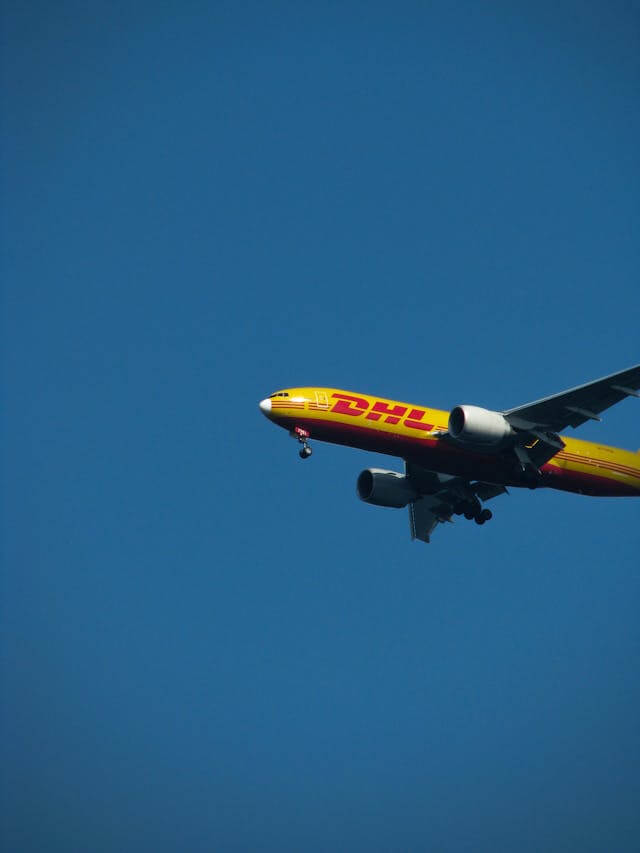
Shipping costs play a crucial role in dropshipping, affecting both your profitability and customer satisfaction.
Since you don’t hold inventory, your supplier or fulfillment partner typically handles shipping directly to your customers.
However, these costs can vary significantly depending on the supplier, product weight, and destination. Here are some things you need to account for:
- Supplier Shipping Fees: Many suppliers on platforms like AliExpress or CJDropshipping offer free or discounted shipping options (e.g., ePacket). While this reduces upfront costs, shipping times might be longer, especially for international deliveries. Express shipping options like DHL or FedEx can cost $20–$50 per package, depending on the destination and weight.
- Geography-Based Costs: Shipping domestically is usually cheaper than international shipping. For example, U.S.-based suppliers might charge $5–$10 for domestic delivery but $15–$30 for international orders.
- Customs and Import Fees: If your supplier ships internationally, your customers might incur customs or import fees, which could lead to dissatisfaction if not communicated upfront.
- Fulfillment Partner Costs: Some dropshipping agents or fulfillment centers charge additional fees for branded packaging or managing orders.
Expert Tip
While it’s tempting to offer free shipping across the board, it’s essential to calculate how it affects your profit margins. Consider incorporating shipping costs into your product prices or offering tiered shipping options based on delivery speed to balance affordability and customer satisfaction.
Tax and Legal Compliance
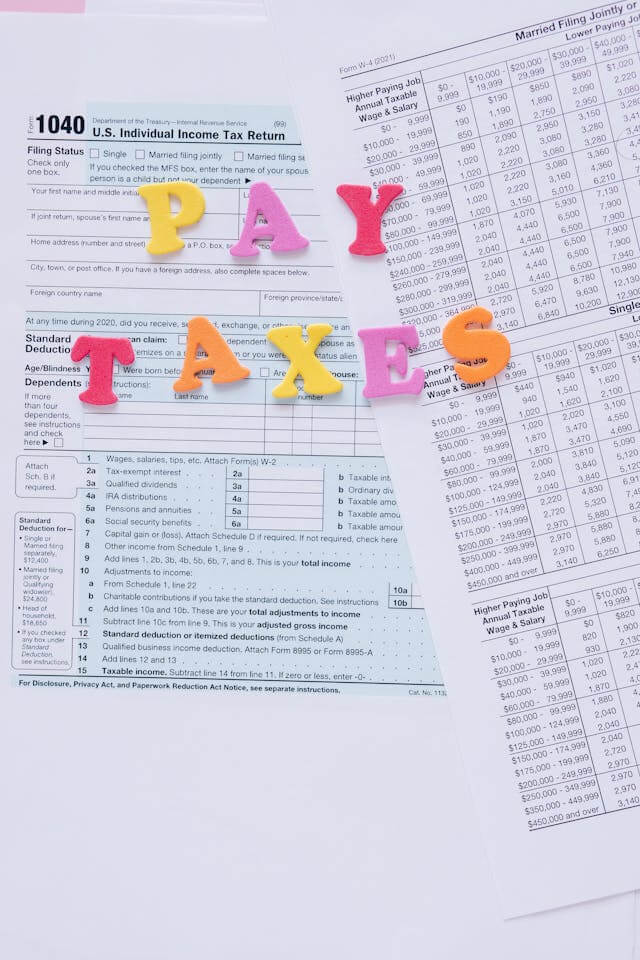
Handling taxes and legal compliance is a crucial yet often overlooked aspect of starting a dropshipping business.
Depending on your country, you may need to register your business as a sole proprietorship, LLC, or corporation. Costs vary but typically range from $50 to $500. For instance, forming an LLC in the U.S. costs around $100–$300 on average.
How to Stay Compliant
- Understand Local Laws: Research the tax and legal requirements in both your business’s operating country and your target markets.
- Get an EIN or VAT Number: In countries like the U.S., obtaining an Employer Identification Number (EIN) is often necessary for tax reporting. Similarly, European sellers may need a VAT (Value Added Tax) number.
- Use Automation Tools: Automating tax calculations, filings, and compliance through platforms like Shopify, WooCommerce, or tax-specific tools reduces errors and saves time.
Expert Tip
Consult a local tax expert or attorney when starting to ensure your business is compliant. Although there are upfront costs, it’s a small price to pay compared to the potential legal troubles of non-compliance.
White Labeling and Private Labeling

If you’re an experienced dropshipper looking to take your brand to the next level, you might consider white labeling or private labeling your products.
This step involves working with suppliers who allow you to customize their products with your brand, logo, and packaging.
While this approach gives you more control over your brand image, it also brings a whole new set of expenses to consider.
White Labeling: White labeling is typically more affordable compared to private labeling. In this process, you take a generic product and rebrand it as your own without customizing it too much.
This usually involves lower MOQ (Minimum Order Quantities), so you don’t need to order large amounts upfront. However, you’ll still need to account for product sourcing, customization, and potential packaging costs.
Private Labeling: Private labeling, on the other hand, gives you more flexibility to change the product’s design and features. However, this process tends to be pricier and usually comes with higher MOQ requirements.
You’ll need to order larger quantities to make it worthwhile, which could be a challenge if you’re just starting out.
Besides product sourcing, you’ll also face costs related to branding, product development, custom packaging, and possibly even working with a manufacturer to ensure product quality.
In both cases, you should also plan for longer lead times for product production and shipping, which could affect how quickly you can get products to customers.
Expert Tip
For most beginners, starting with a standard dropshipping model without private or white labeling is recommended. But if you’re considering white or private labeling down the line, it’s important to factor in these extra expenses when budgeting for your dropshipping business.
Is It Possible to Start Dropshipping Business With No Money?

Technically, yes. You could use the Shopify trial period and perhaps get on by running your own marketing campaign to draw traffic to your online store.
The problem with this approach is that your Shopify dropshipping store would barely be functional. It would also take a herculean effort to make headway without any structured advertising.
In a nutshell, it is not impossible to start dropshipping without money but it is not ideal. You may have a better chance at success if you try to at least come up with start-up funds for the basics.
FAQs
Do I Need to Register a Dropshipping Business?
Yes, it is advisable to register your dropshipping business. Registering your business provides legal protection, allows you to operate under a specific business name, and can help you establish credibility with suppliers and customers.
Additionally, depending on your location, you may need to obtain a business license or permits to comply with local regulations.
How Much Can I Earn From Dropshipping?
Earnings from dropshipping can vary widely based on several factors, including your niche, pricing strategy, marketing efforts, and the volume of sales.
Some dropshippers earn a modest side income, while others can generate significant profits, potentially reaching thousands of dollars per month.
Generally, profit margins in dropshipping range from 10% to 30%, but successful entrepreneurs often find ways to optimize their operations for higher returns.
How Do I Choose a Profitable Niche for Dropshipping?
Choosing a profitable niche involves researching market trends, identifying gaps in the market, and assessing competition.
Start by analyzing consumer demand using tools like Google Trends or other dropshipping tools.
Look for niches that align with your interests or expertise, as this can enhance your marketing efforts.
Additionally, consider factors such as product availability, shipping costs, and potential profit margins when selecting your niche.
How Can I Reduce Costs When Starting Dropshipping?
To reduce costs when starting a dropshipping business, consider the following strategies:
- Choose Low-Cost Platforms: Utilize free or low-cost eCommerce platforms to minimize initial expenses.
- Negotiate with Suppliers: Build relationships with suppliers to negotiate better prices or terms.
- Optimize Marketing Efforts: Focus on cost-effective marketing strategies such as social media marketing and content marketing instead of paid advertising.
- Start Small: Begin with a limited product range to reduce inventory costs and gradually expand as your business grows.
Are There Free Platforms for Starting a Dropshipping Business?
Yes, there are free platforms you can use to start your dropshipping business. While many dropshipping platforms, like Shopify, require a subscription, you can use alternatives like WooCommerce (which is free to install on WordPress) or Big Cartel (free for up to 5 products).
However, these free platforms often have limitations in terms of features or scalability, so as your business grows, you may need to upgrade to premium plans.
You can also start selling on marketplaces like eBay or Etsy with no upfront fees, although they charge transaction and listing fees.
Keep in mind that while the platform may be free, you will still need to consider other costs such as domain names, hosting, or marketing tools to effectively run your business.
Final Thoughts
Starting a dropshipping business is an exciting adventure, but it’s important to know what you’re getting into financially.
While the upfront costs are lower compared to traditional retail businesses, a little planning and budgeting go a long way.
When you understand the key expenses and set clear goals from the start, you’ll be in a much better position to avoid surprises and set up a solid foundation for your business.
If you’re just starting your dropshipping journey and feeling out of your depth with all this then we’re here to help. At NicheDropshipping, we provide one-stop dropshipping services including white labeling, warehousing, branded packaging, and worldwide fulfillment.
Contact us to learn more about our services.
